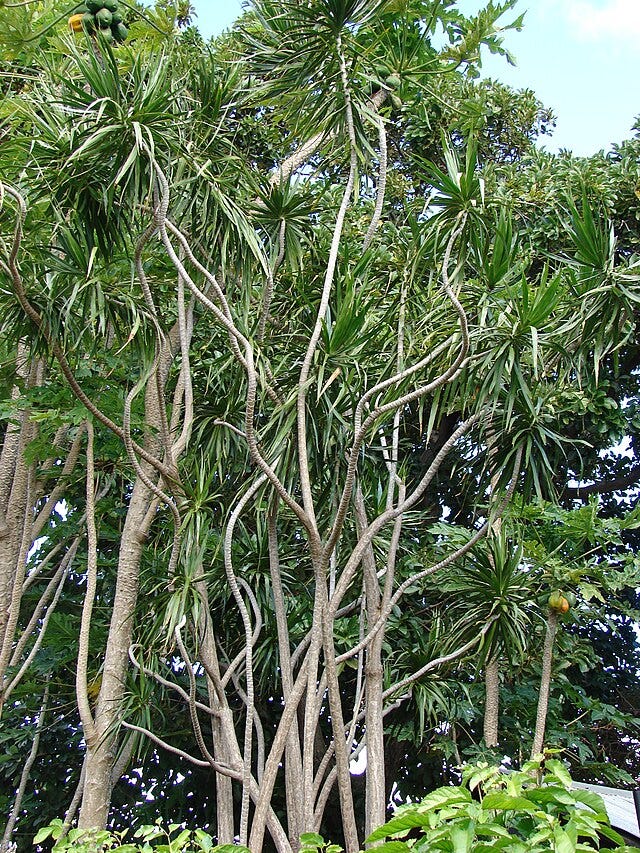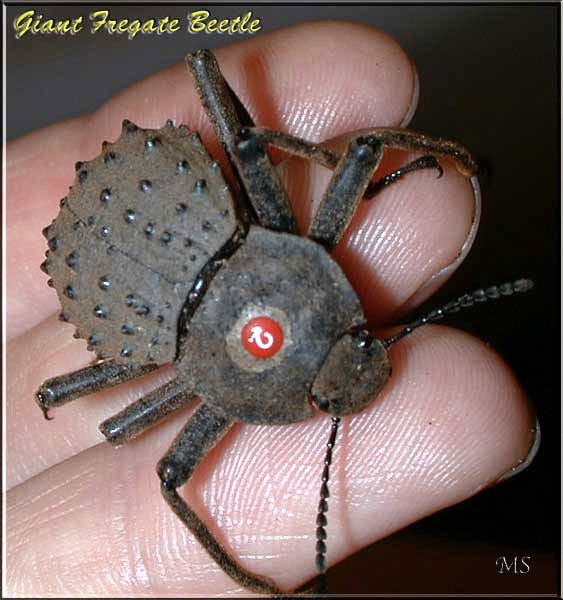Quite a mouthful, this one. The “var. angustifolia” means that this particular plant is a variety of Dracaena reflexa. You may know it by the name Dracaena marginata or the Madagascar dragon tree. I have three in my collection quite by accident, but we’ll get into that a little bit later, since it speaks to one of the more interesting traits of this plant. First let’s talk basics, Dracaena reflexa is native to Madagascar, Mozambique, Mauritius, and other islands in the Indian Ocean. It’s main form is also called the Song of India and has green leaves with white margins (plant talk for edges).
Dracaena reflexa var. angustifolia has longer, thinner leaves that are green with a reddish or purple margin. In the sun the whole leaf can get red, which is phenomenal.
The plant is used widely in traditional medicine in Madagascar “to cure malarial symptoms, poisoning, dysentery, diarrhea, dysmenorrhea, and to be useful as an antipyretic and hemostatic agent.” Some research has been done on this plant to extract any useful phytochemicals and the research looks promising. D. reflexa could turn out to be a useful antioxidant. There may be some truth to the plant being a cure for poison as it contains saponins. Saponins have been used in emetics, sneezing powders, and are a diuretic, so they could help expel poison. I’d still call poison control, though, if I were you.
The plant is also home to an endangered beetle that uses it as a hiding spot during the hot days, and comes out at night to eat. The Frégate beetle, Polposipus herculeanus, has reached critical numbers on Frégate Island, where it is endemic. The beetle has a really cool defense tactic, when it’s angry it squirts a smelly liquid that turns skin purple. Scientists don’t know much about its life in the wild, but there are a few thriving populations in captivity. Hopefully we can figure out how to save this cutie!
Now, on to the reason I accidentally have three Dracaena reflexa var. angustifolia and what makes them such great houseplants. I started out with one plant that has four branches.
But being a total klutz I broke one of the four branches off. As plant people usually do when these types of accidents happen, I shoved the broken tip in dirt, watered it, and waited. Fortunately it rooted. So now I had two.
The branch I had broken also sprouted a new branch, it has a little crook in it, which you can see here.
The third was, oddly, part of a flower arrangement someone gave me, which I planted. It’s my tallest Dracaena at the moment.
Just for kicks here’s another accidental Dracaena reflexa variety, a tricolor. When I bought it, it wasn’t labeled and was buried so deep in the pot I thought it was an ornamental grass. So I put it outside on my balcony all winter… it almost died. But once I realized what it was I brought it inside and saved it, well them, there are two in this pot. Since they’re growing again, I’ll separate and repot them soon. It’s hard to see in the bad light in my apartment, but the leaves are green, cream, and pinkish on the edges.


For a Dracaena to be really valuable in the plant trade, branching, twists, and bends in the canes are necessary. Dracaena’s don’t branch until they’re mature which can take many years, so horticulturists and houseplant enthusiasts use other methods to achieve an interesting look, like this plant below.
To encourage a four-branched plant like the one I have above, the plant is topped. Just, you know, chop the top off. Plants have what is known as an apical meristem at the tip of each branch, this is where new growth happens and why plants grow taller (or longer in the case of vines). If you chop the apical meristem off, the plant will activate other growing buds on the stem, and new branches form so that growth can continue. And, of course, the bit you chop off can be rooted, so nothing is wasted.
Another way to get a Dracaena to branch is to bring the apical meristem lower than the base of the plant. This is totally weird, so here’s a picture from an article with good instructions.
The two tall canes are weighted down and you can see the branching happening at the base of the plant. Since the weighted branches still have their apical meristems intact, they’ve curved and are growing back upward, thus achieving a wild, curvy Dracaena.
Until I started researching today… I didn’t know these things were possible and I’m not saying I might go all mad scientist on my plants, but this section isn’t called the lab for nothing. There might be some Dracaena experiments in my future.
So that’s it! This month’s plant will serve as inspiration for the paid posts in my 100% Plant-Based Horror sections. Here’s the break down, in case you’re new and/or curious.
First week of the month - The Lab (that’s this post!) - Free for everyone
Second week of the month - The Witch Lab (a short, spooky piece from a plant witch’s journal detailing one of her experiences helping a client with the featured plant) - Paid subscribers only
Third week of the month - The Spell Book (an entry from The Witch’s spell book detailing how she uses this plant for her dark magic) - Paid subscribers only
Fourth week of the month - 100% Plant-Based Horror story featuring the month’s plant. These are longer stories that include everything from ghosts, to parasites, aliens, experimental supplements, and more! - Paid subscribers only











